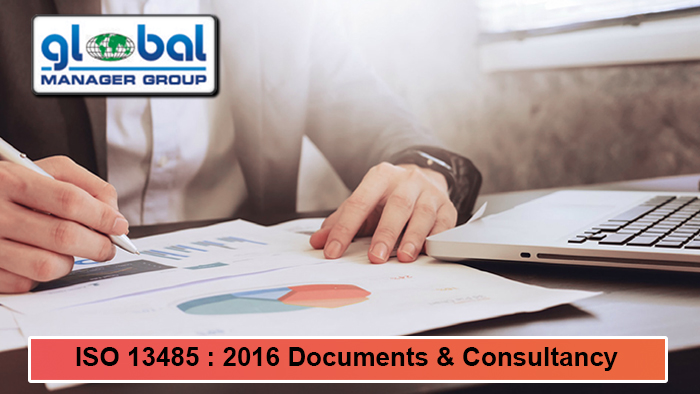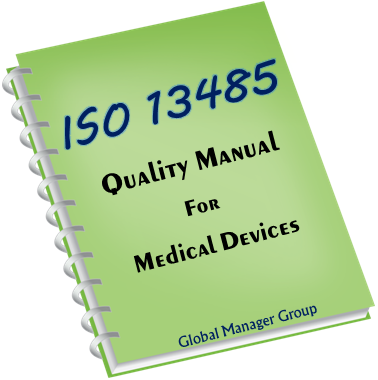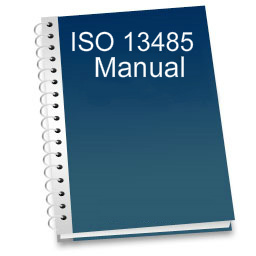
Medical device manufacturing is one of the most regulated sectors in which important quality systems and product requirements must be fulfilled. The regulatory necessities are intended to confirm that manufacturers constantly design, produce and place onto the market medical devices that are safe and fit for their intended goal. The ISO 13485 standard is an actual solution to meet the complete requirements for a QMS. Implementing ISO 13485 delivers a practical foundation for manufacturers to address the rules and responsibilities as well as demonstrating a commitment to the safety and quality of medical devices.
ISO 13485 is a Quality Management System standard, consequent from the internationally recognized and recognized ISO 9000 quality management standard series. ISO 13485 familiarizes the previous version of ISO 9001, ISO 9000:2008 process-based model for a regulated medical device manufacturing environment. While ISO 13485 is based on the ISO 9001 process model concepts of Plan, Do, Check, Act, it is considered for regulatory obedience; therefore, it is more prescriptive in nature and needs a more thoroughly ISO 13485 documents QMS. ISO 13485 support medical device manufacturers in designing a quality management system that establishes and sustains the effectiveness of their procedures. It confirms the constant design, development, production, installation and distribution through to disposal of medical devices that are safe for their proposed.
There have constantly been requirements regarding management responsibilities in ISO 13485. After all, leadership from top management is part of the foundation of the ISO 13485 standard, along with six other quality management principles. And, this is a good thing—without management’s ongoing support, Quality Management System is destined for problems.
What are the management responsibility requirements in the ISO 13485:2016?
The ISO 13485 standard covers the responsibilities of top management, the majority of which are the same as, the current requirements in the previous version. The first part defines how top management must show leadership through its commitment to the QMS, including:
- Assure adequate resources are available when required.
- Holding accountability for the effectiveness of the Quality Management System.
- Fostering constant enhancement.
- Confirming that the quality objectives and quality policy are aligned with the QMS, and with the company’s strategic goals.
The remaining three parts, discuss the quality policy and its requirements, the requirement to put consumers first, and the roles, responsibilities, and authorities of the company. These requirements only saw slight changes from the last revision; for example, top management’s responsibility to confirm the suitability, adequacy, and efficiency of the QMS remains the same, although a few requirements have been removed—such as those for the QMS representative. The role of top management remains as important as ever.
How can you meet the requirements?
The requirements in the ISO 13485:2016 standard haven’t changed much from the last version, so don’t have to worry about making major changes to the role of top management in Quality Management System. That said, here are some significant things that organization should contain to demonstrate top management’s commitment and involvement in Quality Management System:
- Management is complex in measuring the effectiveness of the Quality Management System.
- Top management provides clear direction for creating the quality policy and quality objectives, communicates this throughout the organization, and tracks their progress.
- Management demonstrates that the QMS is not a side project, but rather a significant part of business processes.
- Management assesses and addresses the necessity for resources.
- Management supports and encourages constant improvement.
- Top management assure that a process is in place to understand and meet appropriate requirements from consumers, as well as local and federal regulations.
- Management attentions on the consumers.
- Roles, responsibilities, and authorities are appropriately assigned, and understood both by the assignees, and by other employees who interact with the assignees.
In addition, it’s significant to remember that management assessment and its necessities remain in the new revision, which contains response to management on QMS efficiency and maintenance. The management review process continues to be a key indicator of management’s ongoing commitment to the Quality Management System, and in fact, the new revision has extended on those requirements. New inputs are essential regarding the handling of complaints and reporting to relevant regulatory authorities. Also, the outputs now have necessities regarding actions and decisions that lead to changes to the QMS, and obedience with regulations. It’s no secret that in order for an ISO 13485 QMS to succeed, it needs support from management. Without such support, other priorities will take center stage, and all that time and money spent executing the Quality Management System are wasted—and the possible benefits lost.





 ISO 13485 deals with the quality standards and requirements pertaining to the design and manufacture of medical devices. These standards help you to establish a full-fledged quality management system (QMS) in the processes of developing, manufacturing and employing medical equipment.
ISO 13485 deals with the quality standards and requirements pertaining to the design and manufacture of medical devices. These standards help you to establish a full-fledged quality management system (QMS) in the processes of developing, manufacturing and employing medical equipment. ISO 13485 Manual
ISO 13485 Manual
